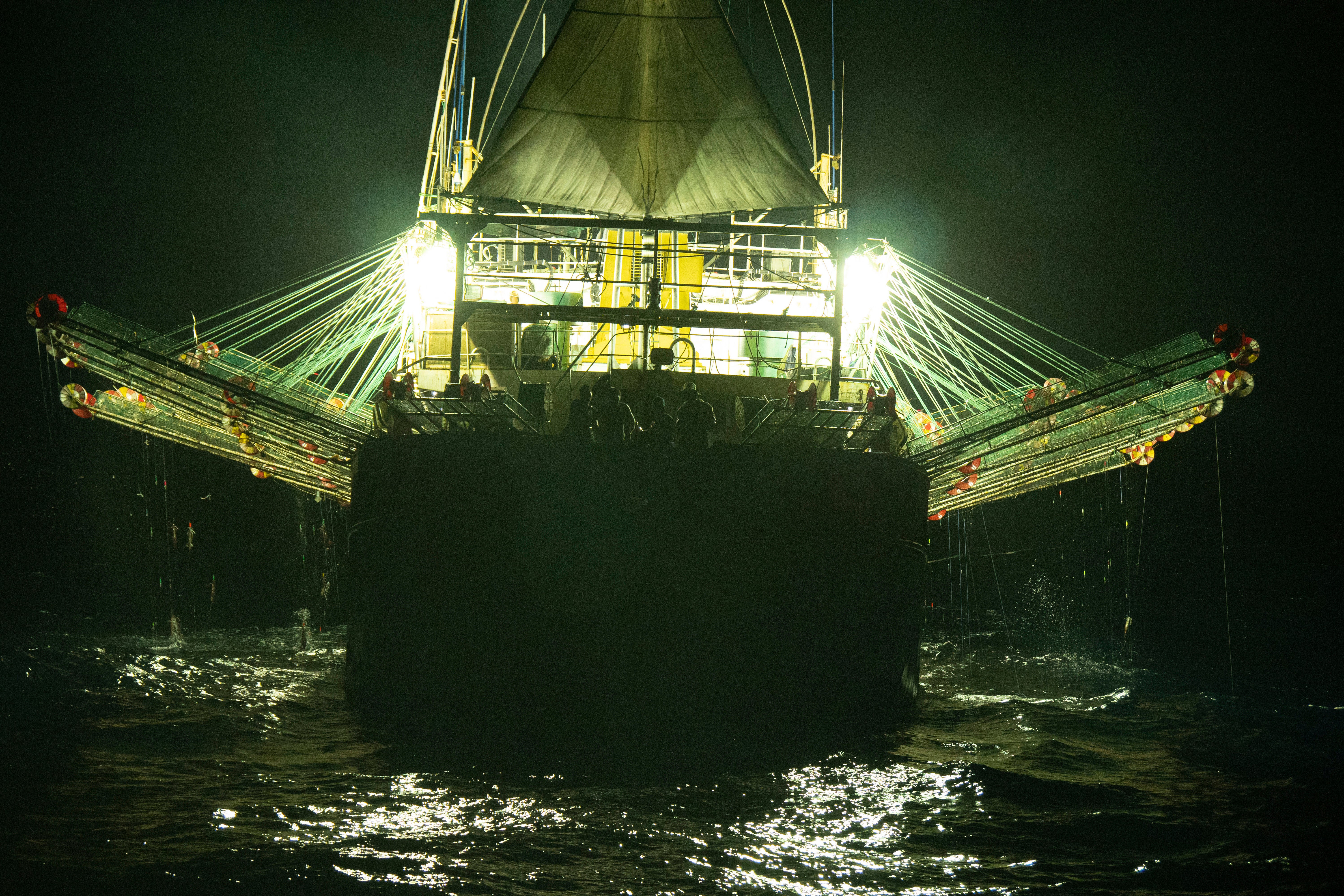Labor abuse on fishing vessels widespread, with China topping list of offenders, report says
A new report has identified nearly 500 industrial fishing vessels where workers face hazardous, forced conditions sometimes akin to slavery

Your support helps us to tell the story
From reproductive rights to climate change to Big Tech, The Independent is on the ground when the story is developing. Whether it's investigating the financials of Elon Musk's pro-Trump PAC or producing our latest documentary, 'The A Word', which shines a light on the American women fighting for reproductive rights, we know how important it is to parse out the facts from the messaging.
At such a critical moment in US history, we need reporters on the ground. Your donation allows us to keep sending journalists to speak to both sides of the story.
The Independent is trusted by Americans across the entire political spectrum. And unlike many other quality news outlets, we choose not to lock Americans out of our reporting and analysis with paywalls. We believe quality journalism should be available to everyone, paid for by those who can afford it.
Your support makes all the difference.Hazardous, forced work conditions sometimes akin to slavery have been detected on nearly 500 industrial fishing vessels around the world, but identifying those responsible for abuses at sea is hampered by a lack of transparency and regulatory oversight, a new report concluded.
The research by the Financial Transparency Coalition, a Washington, D.C.-based nonprofit organization that tracks illicit money flows, is the most comprehensive attempt to date to identify the companies operating vessels where tens of thousands of workers every year are estimated to be trapped in unsafe conditions.
The report, published Wednesday, found that a quarter of vessels suspected of abusing workers are flagged to China, whose distant water fleet dominates fishing on the high seas, traditionally lawless areas beyond the jurisdiction of any single country. Vessels from Russia, Spain, Thailand, Taiwan and South Korea were also accused of mistreatment of fishers.
___
This story was supported by funding from the Walton Family Foundation. The AP is solely responsible for all content.
___
Forced labor in the seafood industry is a rarely seen but common phenomenon, one increasingly recognized as a “widespread human rights crisis,” according to the report's authors. The Associated Press in 2015 uncovered the plight of thousands of migrant workers from Myanmar, Cambodia and Laos who were abused while employed on Thai vessels whose catch often ended up in the United States.
Globally, as many as 128,000 fishers face threats of violence, debt bondage, excessive overtime and other conditions indicative of forced labor, according to the U.N.'s International Labor Organization.
U.S. and European companies are under increasing pressure to clean up supply chains in labor-intensive industries where worker abuse is widespread. The Financial Action Task Force set up by the Group of Seven wealthiest democracies has identified illegal logging and mining as a key driver of money laundering and encouraged its members to set up publicly available databases to raise awareness about the financial flows that fuel environmental crimes.
However, the seafood industry has so far escaped the same scrutiny, in part because governments often lack the tools to regulate what takes place hundreds of miles from land. This week, President Joe Biden's administration decided to abandon a planned expansion of the flagship Seafood Import Monitoring Program used to prevent illegal fishing and forced labor on foreign vessels, which supply about 80% of the seafood Americans eat.
“We are once again seeing the heartbreaking reality of what is happening on some commercial fishing vessels out at sea and it’s completely unacceptable," Beth Lowell, vice president in the U.S. for the conservation group Oceana, said about the report, which she had no role in. “Forced labor and other human rights abuses should not be the cost for a seafood dinner.”
The National Oceanic and Atmospheric Administration said Tuesday that it decided to shelve the planned expansion after receiving public feedback on the proposed rule changes and would instead focus its attention on improving the impact of the current import monitoring program, which covers around 1,100 species.
Another obstacle to transparency: offenders are frequently licensed by governments like Panama and Belize with reputations for financial secrecy and minimal oversight of their fleets. Of the vessels suspected of abuse and whose ownership could be identified by the Financial Transparency Coalition, 18% flew so-called flags of convenience companies use to avoid careful examination and hide their shareholder structure.
The report identified two Chinese companies — ZheJiang Hairong Ocean Fisheries Co. and Pingtan Marine Enterprises — as the worst offenders, with 10 and seven vessels, respectively, accused of human rights violations. A third company, state-owned China National Fisheries Corp., had five.
None of the companies responded to AP's request for comment. But ZheJiang Hairong in a statement last year to the state-owned Fujian Daily claimed ownership of only five of the 10 vessels that would later appear on the Financial Transparency Coalition's list. Pingtan last year was sanctioned by the Biden administration over allegations of illegal fishing and labor abuse. and later saw its shares delisted from the New York Stock Exchange.
The Financial Transparency Coalition scoured government reports, media accounts and complaints by advocacy groups to come up with a list of 475 individual vessels suspected of forced labor since 2010. Of that amount, flag information was available for only about half of the total — another indication of the need for greater ownership transparency, the group says.
—
AP Reporter Fu Ting in Washington, D.C., and AP researcher Wanqing Chen in Beijing contributed.
__
Contact AP’s global investigative team at Investigative@ap.org or https://www.ap.org/tips/